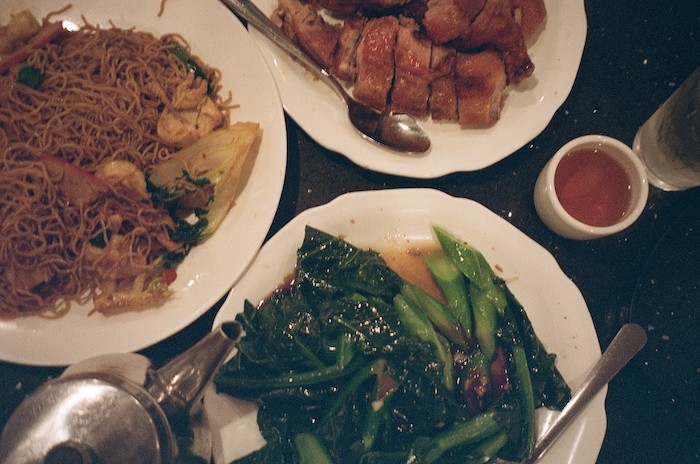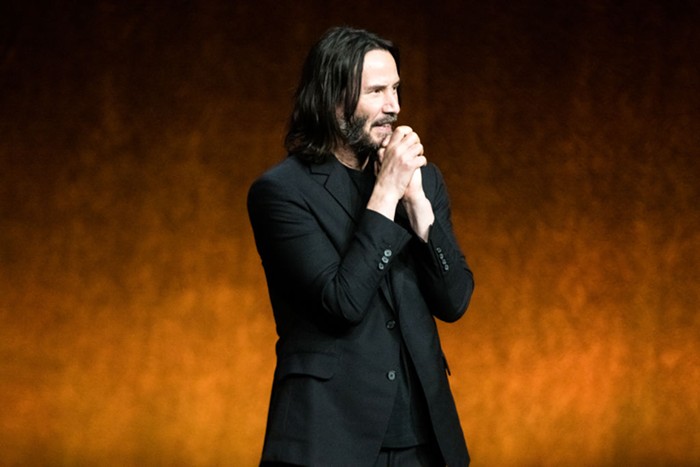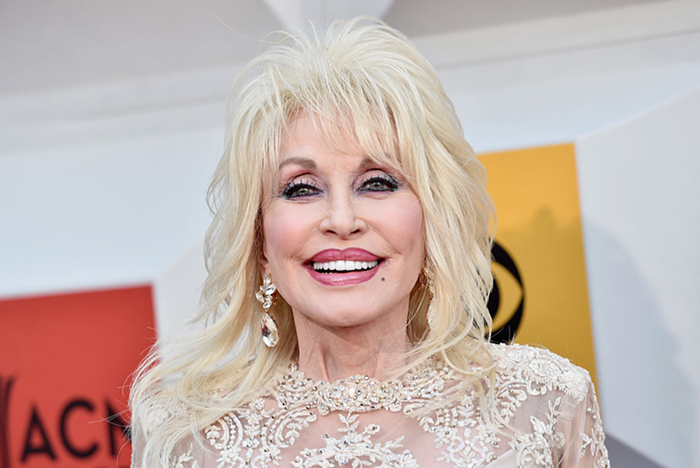When I was five, I was introduced to taxidermy at the Anchorage International Airport—basically a museum for deceased wildlife.
I found the taxidermied polar bears particularly terrifying, as they stood tall and ferocious on their hind legs. I vividly remember seeing, among many other displays, a massive moose behind a glass case. It gave me a terrible feeling in my gut. My uncle Tony grabbed my hand and slowly walked me over to visually examine the horrifying specimen, assuring me the moose was no longer alive and couldn’t hurt me. Was I scared of being injured, or just pained by the sight of a creature that was clearly dead, yet appeared so alive and well? One thing’s for sure: It made me overwhelmingly uneasy and very, very sad.
Ever since, my anxiety and revulsion for taxidermy resurfaces each time I see it—especially if I’m caught off guard. Feelings of dread burn in the pit of my stomach; my heart races; waves of panic wash over me; I might cry, shake, or hide behind someone else in a pitiful attempt to escape.
Apparently I’m not alone. After more than two decades of being treated like a weirdo, I recently discovered a couple of sister Facebook groups (one with taxidermy photos for desensitizing purposes, one without) where at least 200 others share my exact same phobia, with some minor variance in symptoms.
Like many of these people, I’ve been criticized for my fears—laughed at, accused of pretending to be scared for attention, and told I should “just get over it.” That would be great, actually. But I haven’t gotten over it and doubt I ever will—not fully, at least. For me it goes way back to childhood. Sure, there was the Alaska airport incident, but my fears grew even worse following my #MeToo story when I was eight. It happened in my 16-year-old male babysitter’s claustrophobic mobile home—one stuffed to the gills with game trophies.
My intense phobia often results in backing out of a lot of drinks and dinner plans, specifically with white friends and family members. And since my Republican-ass grandpa is a hunter, I’ve deemed his house off-limits.
At least in Alaska, the showcasing of bears, moose, and bobcats makes some logical sense. And perhaps Oregon as well, like in a Mount Hood log cabin, inside a hunter’s home, or in a fucking museum—places I can easily avoid. Unfortunately for me, a growing plethora of Portland businesses (especially bars, restaurants, and retail stores) have embraced deer heads and other taxidermy mounts as an integral part of our aesthetic identity.

Portland fancies itself an animal-loving city. We adore our pets, and easy access to local produce makes us exceedingly friendly to vegans and vegetarians. Oregon’s also home to the United States Fish and Wildlife Services Forensics Laboratory in Ashland, the only full-service lab in the world dedicated to crimes against wildlife. It’s interesting that a city and state so sensitive to veg folk and animal-lovers can also casually favor animal heads as a decor choice. For them, maybe it’s not such a big deal. For me, society’s normalization of taxidermy is an unhinged celebration of man’s dominance over animals and an artistic glorification of the violence we inflict on them. Beyond that, I think it’s become a nauseating Portland cliché.
The majority of my friends agree that taxidermy is weird and creepy, and if I didn’t appreciate a diversity of opinion, I wouldn’t have friends like Emily Paben. She’s frankly one of the most “Portland” people I know: Emily manages a coffee shop, has a designer French bulldog, and loves a rustic, natural aesthetic, including bearded dudes, terrariums, and yes, taxidermy. Since she understands what I can handle, and her small-scale taxidermy decor won’t push me over the edge (currently just a few furs/skins and an alligator head), I decide she’s the perfect person to ask: Why in the hell do people like this?
“I don’t think I liked it until I moved to Portland,” she says. “I remember my grandpa hunted and had antlers all over the house. His generation were super backcountry, so maybe [my interest in taxidermy] has a little bit to do with childhood.”
The first item Emily acquired was a necklace with an alligator hand. She’s also a frequent shopper at Paxton Gate, a taxidermy shop of natural wonders on North Mississippi. However....
“I saw a monkey hand at Paxton Gate recently and that was too much for me,” she says. “I prefer ‘scaly’ to ‘furry’ when it comes to actual body parts. At one time I wanted a deer head, but now feel more comfortable with skulls instead. I don’t like the false eyes. It’s a little too close to us as people. It makes our mortality a little bit more apparent.”

I also talked to Mark Annen, an architect and Oregon native who’s designed Portland interiors since 1994 (including more than 100 restaurants). While Annen says he personally doesn’t notice a lot of taxidermy in Portland restaurants and shops, he agrees “it’s definitely there.” He attributes part of the trend’s popularity to new Portlanders who’ve embraced a stereotypical idea of the city.
“[It’s like] 'Building the Dream of Oregon,’” Annen says. “This idea of the log cabin, the flannel, the axe, and the handmade leather products.” While all have been around for quite some time, Annen explains they weren’t fetishized until recently.
“I think that’s the difference,” he says. “It’s become a commodity. A credibility thing.”
While Annen finds antlers aesthetically pleasing and skeletons “fascinating,” he compares Portland’s taxidermy resurgence to the “put a bird on it” trend. Only now it’s “put antlers on it.”
“Look at the graphics on some of the restaurants,” Annen says. “The artwork on the menu. Are you getting that animalistic energy? I think that’s more prevalent. [Graphics depicting] Sasquatch, deer, owls.”

For me, Portland’s majority whiteness has something to do with the explosive prevalence of this “woodsy” vibe. As a biracial person (half Black, half white), I’ve noticed I’ve never had to worry about seeing taxidermy decor in a Black or brown person’s home or business—but if you know of any, I’ll take note and steer the fuck clear. (By the way, the symbolic use of dead deer and taxidermy in Get Out was not lost on me.)
That said, other cultures—especially Indigenous Peoples—have utilized animal skins in various ways. The Zulus are known to skin leopards for clothing, while male leaders of the American Plains Indians wear eagle war bonnets (each feather earned through selfless acts of courage and honor). Those who live off the land must have a certain respect for wildlife to survive, and when they use elements from an animal it has a cultural, spiritual significance that often represents the person’s unique role in their community.
“We currently live in a society where there’s a disconnect,” Annen explains. “We don’t live directly off the land anymore... so people are trying to harken back. There’s something primal inside they’re trying to relate to.”
Annen doesn’t think hunters see their game trophies as morbid, but look at them with honor, reverence, and “cherishing the power of the animal.” Look, I love Avatar and hate the meat industry; I wish everyone who ate meat had to go out, hunt, and complete a spiritual ritual every time they wanted to feast on animal flesh. It’s not the act of hunting that I’m struggling to understand; it’s what we as a modern society do afterward, with their skins.

Along the five busiest, most gentrified blocks of North Mississippi Avenue, there are at least seven taxidermy-featuring businesses I’ve learned to avoid. But even these businesses pale in comparison to Paxton Gate—Mississippi’s taxidermy mother lode. San Francisco-based Paxton Gate opened its Portland shop in 2010, selling a diverse array of exotic and vintage animal taxidermy, fossils, rocks and minerals, rare bugs, plants, jewelry, books, and other “oddities inspired by the garden and natural sciences.” For Portlanders who don’t necessarily hunt, but want to employ a rustic or Victorian look, this place caters to you.
I recently mustered up the courage to check out their front window displays. The nervousness set in as I approached and locked eyes with a dead alligator, penguin, otter, and a rabbit fitted with antlers. I can see how—if you didn’t find them terrifying and sad—it might be neat to see what these wild animals look like up close. Personally, I’d rather risk my life looking at a living, breathing lion in Africa than go inside and see the stuffed ones that until recently were on display inside Paxton Gate.
The Portland store’s owners, Susan and Andy Brown, tell me they recently donated their lion and lioness to the Denver Museum of Nature and Science following the animal’s 2016 inclusion on the endangered species list. On their website, Paxton Gate says it doesn’t support the trade of poached or endangered animals, nor cruel ranching practices (such as keeping animals in small cages or chained up), which also reflects Portland’s style of doing business: offering an ethically sourced route for acquiring these strange and controversial items.
“The majority of the taxidermy we have are vintage pieces that we get from collections—usually when someone passes away,” says Susan. “We’ve been super fortunate to have people who contact us. We got part of a local collection this year from a Portland woman whose father was a big game hunter in the ’60s. But most of what we’ve collected is older. We’ve had a couple pieces that were 100 years old.”
Paxton Gate also deals in baby livestock pieces—chicks, ducklings, piglets, and more—all of which they say were stillborn or died of natural causes.
Though taxidermy is prominently featured in Paxton Gate's three West Coast locations, the Browns say their best-selling items are actually rocks and minerals, framed entomology, and jewelry. And interestingly enough, the Paxton Gate Portland staff are mostly vegan and vegetarian. The Browns’ fascination with taxidermy, they say, is really a desire to bring elements of nature and science to an indoor environment.
“People have a fascination with [the natural world],” Andy says. “So how do you incorporate that into your lifestyle? We offer an opportunity to do that.”
Clearly there’s a market for those who find this stuff interesting from a natural science perspective. The Browns tell me that a visit to Paxton Gate is meant to be an educational experience.
“People tell us all the time the store is like a natural history museum,” Andy says. “And there isn’t one in Portland, so we’re sort of a de facto destination for people that want to see this kind of thing... to learn about things they ordinarily wouldn’t have a chance to see.”
After I mention my phobia, Susan tells me about a Paxton Gate customer who’s shared my fear ever since his parents made him pose with creepy taxidermy as a child.
“Early on, we had a customer that had a taxidermy phobia, but all his friends told him he should come anyway, and he did several times,” she says. “He just wanted to know where the taxidermy was so he wouldn’t round a corner and run into it—but he enjoyed coming in and being around it. He liked testing his fear.”
The Browns say they try to be considerate of their customers’ phobias (whether it be butterflies, spiders, snakes, or other taxidermy) by moving it out of the way or telling them where it’s located. I only wish other Portland establishments were so kind.


In my friend Emily’s opinion, Portland’s taxidermy trend may be quieting down a bit.
“I think it’s backed off a little,” she says. “I saw the boom that happened when Paxton Gate opened on Mississippi, and soon after that all the bars and restaurants were covered with taxidermy. I haven’t seen it quite as much lately—though that could have something to do with where and when I’ve been going out.”
Paxton Gate Portland, however, hasn’t seen any slowdown in sales.
“I’d say from a growth perspective we’re seeing year-over-year growth in that category,” says Andy, “and it continues to do so. You always think it’s gonna taper off, but it just doesn’t for some reason.”
At least Emily is cutting back on her taxidermy habit. Once her friends found out that skins and skulls were her “thing,” she was quickly overwhelmed—in the form of presents.
“I [started] getting taxidermy as gifts,” she says. "Unwanted taxidermy as gifts.”
After receiving a puffer fish and a turtle, the last straw was a mounted bat head, at which point she was done with being “Taxidermy Girl.”
“That’s when it finally clicked... I was like, ‘I don’t want this anymore. I don’t like this at all because, actually, I love bats.’ And it made me very sad.”
Feeling sad at the sight of a dead animal seems like a pretty healthy response to me, which is why I don’t have any desire to “test out” my fear like Andy and Susan Brown’s customers. I’ve decided I don’t want years of exposure therapy just to become comfortable in a room full of death displays—lovely and artful as they might be. If you like being around this stuff, I guess that’s cool. But depending on your reasons why, maybe I’m not the one with a problem.












